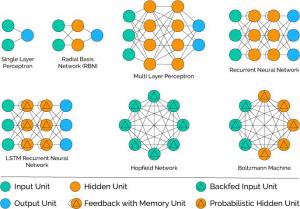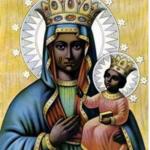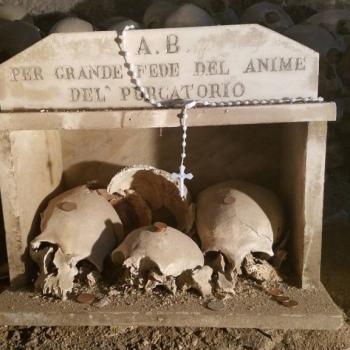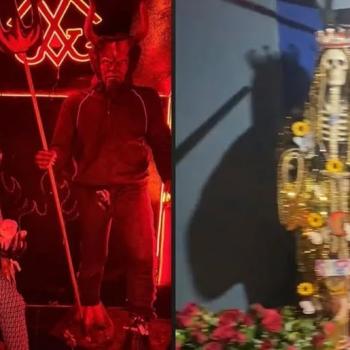By David Metcalfe*
“If understanding followed no rule at all, there would be no good in the understanding nor in the matter understood, and to remain in ignorance would be the greatest good.” – Ramon Llull as cited in Margaret A. Boden’s Mind As Machine: A History of Cognitive Science. Vol 1. p. 56 (Oxford University Press, 2006)
With the furious pace the media sets in announcing today’s innovations in Artificial Intelligence and Machine Learning it’s easy to forget that our quest to create computers capable of thinking like humans first began with humans learning to think like computers. A blinding array of flashy tech talk also makes it easy to forget that one of the key individuals that taught us the basis for the kind of computational thinking that underpins today’s most robust AI systems was a 14th century Catholic missionary from the Catalan region of Spain!
How on earth did a Medieval missionary get the ball rolling on machine learning?
Quite simple really, our missionary, the ‘Angelic Doctor’ Ramon Llull, was passionate about translating the message of Christ and had an ardent faith in the Catholic doctrine of God’s perfection. With those two pillars set in place Llull went on to a produce a prolific output of over 200 books on a diverse array of topics and developed what he called the Ars Magna, or the Great Art – an incredibly complex memory system and symbolic science that used tables and cipher-wheels to codify the common language with which all the Abrahamic faiths use to describe God and God’s perfect creation.
It was Llull’s hope that through this exact science representatives of Judaism, Christianity and Islam would be able to reason together and clearly outline the illuminated nature of Divinity and the perfection of nature found in God’s creation, at least insofar as that’s possible through human reasoning.
Further, Llull was sure that such a divine science would reveal without question the truth of John 4:16 – Jesus saith unto him, I am the way, the truth, and the life: no man cometh unto the Father, but by me.
For Llull it was inconceivable that such a science could fail to demonstrate the true mystery of Christ. Unquestioning in his devotion and visionary zeal it was clear to him that a precise and universal language, codifying a fundamental, symbolic representation of nature and Divinity would prove the incorruptible truth of the incarnation – “For us and for our salvation he came down from heaven; by the power of the Holy Spirit, he became incarnate of the Virgin Mary, and was made man.”
And what’s more, through the very same process of meditative unification this machine would return the fragmented state of Adam’s fallen mind to the perfection of God through Christ, the incarnate Word.
Cum autem subjecta fuerint illi omnia: tunc et ipse Filius subjectus erit ei, qui subjecit sibi omnia, ut sit Deus omnia in omnibus. – And when all things shall be subdued unto him, then the Son also himself shall be subject unto him that put all things under him, that God may be all in all. *
Nature, purified by reason, redeemed by grace, returning to the father through the son – starting with humanity being unified into the Body of Christ through the practice of Llull’s Great Art, or as he titled an early version, Art Abreujada d’Atrobar Veritat, The Abbreviated Art of Finding Truth. Llull designed an apocalyptic machine of revelation to demonstrate finally the irrefutable perfection of God…but wait a second, how does all that give us smartphones and talking coffee machines?
Lull’s ideas are certainly not what we’re used to hearing from the Silicon Valley set and his diagrams don’t look very much like computer software, let alone some as complex as artificial intelligence, but that’s because you might not think of A.I. like this:

While Llull intended only the most basic mechanical devices to assist his art – relatively simple wheels and comparative charts – in developing and working with this system he changed the very nature of how he thought about thinking, and in so doing he changed the architecture of thought in those that followed him. This subtle alteration helped foment the future of information science, and while it may seem hyperbolic to lay the weight of such a feat upon one individual, it was this one individual whose prolific output, evangelical enthusiasm and visionary expression inspired future generations to explore and expand upon these ideas.
Used as an interior contemplative practice by Llull, the Great Art reconstructs a perfected vision of divine creation within the confines of Medieval cosmology – given boundaries by the narrative of the Christian redemption process, it seeks to clarify the murkiness of comparative theology and philosophy in order to open the inquirer to deeper levels of meditation.
This clarification takes the form of codification and when this codification is turned outward to the world and applied, the same systematic architecture that worked to create a calculation of our perceptual world becomes the root dynamics of our current attempts to reproduce those perceptual states through mechanical calculations. Llull’s inner art turned outward becomes the inner workings of our current information systems.
The historical context and depth of Llull’s influence and ideas is better detailed elsewhere, here what we are considering is just the fact that in seeking to create a mechanism of logic and reason he opened a space to begin thinking about mechanisms capable of logic and reason.
In The Medium is the Massage, Marshall McLuhan writes of how ‘the wheel is an extension of the foot,the book is an extension of the eye, clothing is an extension of the skin, electric circuitry an extension of the nervous system – media by altering the environment, evoke in us unique ratios of sense perceptions. The extension of any one sense alters the way we think and act – the way we perceive the world. When these ratios change, men change.”
Ramon Llull’s Great Art is an extension of an attempt to codify the ratios of divinity – an exploration into the very atomic structure of reasoning – and so it is that we find ourselves today talking about Atomic-scale computational materials science and using time crystals in quantum computing.
Behind the buzzwords is an incredible unfolding, an intimate technological process that Dr. Diana Pasulka, Chair of the Department of Philosophy and Religion at the University of North Carolina Wilimington, will be exploring more fully in an upcoming paper, Where Soul Meets Technology: Historical Precedents for Social Telepathy Apps, which I am honored to co-author with her, for the Oxford Press anthology, Believing in Bits: Digital Technology and the Supernatural. The paper will examine elements in the work of Pierre Teilhard de Chardin, Marshall McLuhan and Jacques Vallée that highlight the development of our current mind-machine interface technology from archetypal concept to applied research and development.
To understand the technology of the future we will begin to explore the spiritual life of past machines.
–
For a wonderful exploration into the inner workings of Medieval and Renaissance computational cyphers head over to Mariano Tomatis’ examination of infamous Book of Soyga, a text said to be ‘revealed to Adam by the “good angels of God” in the garden of Eden.’
http://www.marianotomatis.it/blog.php?post=20120423§ion=english
*1 Corinthians 15:28
References:
Stanford Encyclopedia of Philosophy:
https://plato.stanford.edu/entries/llull/
A Very Short History of Artificial Intelligence- Forbes: https://www.forbes.com/sites/gilpress/2016/12/30/a-very-short-history-of-artificial-intelligence-ai/#249d9cbd6fba
*David Metcalfe is a researcher, writer and multimedia specialist focusing on the interstices of art, culture, and consciousness. In 2011 he established the Liminal Analytics: Applied Research Collaborative to focus on testing and deploying a unique combination of applied scholarship, market intelligence, digital media and social network development in order to build strategic multidisciplinary lines of communication.
He is a contributing editor for a number of popular web magazines dealing with alternative culture and is currently working on a long-term transmedia project with Dr. R. Andrew Chesnut, Chair of Catholic Studies at Virginia Commonwealth University, to document the growth and global market presence of devotional traditions associated with Santa Muerte, and the sanctification of death, in the Americas.













